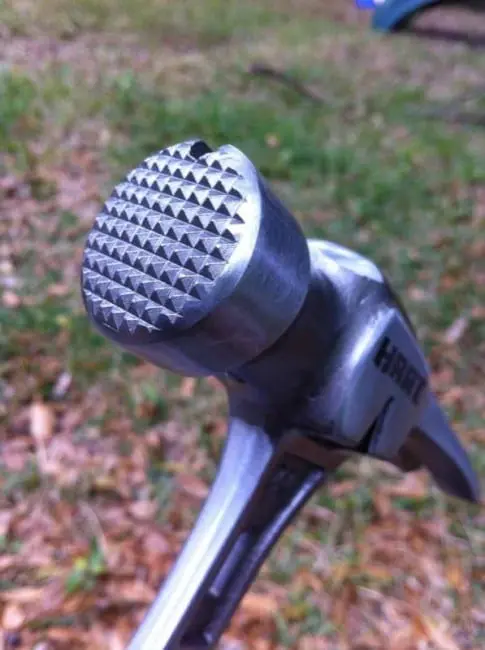For some, a hammer isn’t all that important. If you’re serious about tools, however, or a framer by trade, a hammer is an extension of your arm and something you use almost all the time. With that being the case, issues like weight, features, and balance become very important. In fact, when you’re striking nails almost non-stop, it’s possible to actually calculate the time-is-money factor, and you’ll see that your choice of hammer becomes something that could net you literally hours of labor-savings over the course of a year. It was with that mentality that we turned our fascination to Hart’s line of Mill-faced Steel Framing Hammers and the Hart 21 oz Milled Face Steel Framing Hammer in particular.
Editor’s Note: This review is adapted from our review of the Hart 21oz. Hickory Handle model – we tested both hammers and these reviews were written using both and with both in mind. Most features are interchangeable though there is a slight weight difference between the steel and hickory when swinging.
There are a few things about these new Hart hammers that stand out. First, you can get them just about any way you want. They have both milled & smooth face; and steel, hickory, and even fiberglass handle models. They range in size from 18 to 25 ounces and the hickory models come in both straight and curved handles – at least in the 21 oz. size. Here are the models that are currently available:
Hickory Handle
- 18 oz. Smooth Face, Straight Handle
- 21 oz. Milled Face, Curved Handle
- 21 oz. Milled Face, Straight Handle
- 21 oz. Smooth Face, Straight Handle
- 23 oz. Milled Face, Straight Handle
- 25 oz. Milled Face, Straight Handle
Steel Handle
- 21 oz. Milled Face, Curved Handle
- 25 oz. Smooth Face, Curved Handle
Fiberglass Handle
- 21 oz. Milled Face, Straight Handle
Looking at the head of the Hart hammers, you can see the innovative side nail pull and, on the opposite side, the side nail strike plate that sets these hammers apart from any others we’ve seen. The side nail pull is similar in design to Stiletto’s TiBone hammers, but offset even further away from the head to give it exceptional leverage and pulling power. It’s also far different from the Vaughn side pulls, which have the hammer positioned upside down on the nail and offer only a 90 degree maximum pull. The Hart hammer lays down flat on its side and pulls the nail – provided you have the clearance – a full 180 degrees if necessary. For most 3″ nails, you’ll only need to pull it a little past 130 degrees to get the nail completely out of your wood.

At the top of the striking surface is the magnetic nail holder. The magnet held all of the nails we used very securely and allowed us to get them started hassle-free. It also set the nails into the head within a rather deep channel, so it’s unlikely you’re going to lose on on the way to being set, or have it slide sideways on you should you inadvertently deliver a blow that isn’t perfectly straight to the wood. Just behind the striking face is a rounded out gap that Hart claims is perfect for bending 1/4″ rebar. Problem is, 1/4″ rebar is a rarity, but if you find some, I’m confident you can bend it with this hammer.
Testing in the Field

Conclusion
We used this hammer quite a bit, along with its hickory handled counterpart. Hart is definitely onto something and it’s something that I don’t believe will take long to catch on. Pick up one of these hammers and feel it in your hand and you’ll feel a tool that is pro-grade, with decent balance and innovative features that you’re likely to use. On top of that, the $26 asking price is right in line with what I’d expect to pay for a serious steel handled hammer. Hart may be new, but they’re not “green” (as in ‘inexperienced’). Of course, you might be if you see someone using one in the field and you’re stuck with your old hammer! Go out and, if you don’t buy one, at least pick one up and hold it so you can see what all the fuss is about. You might not put it down.






